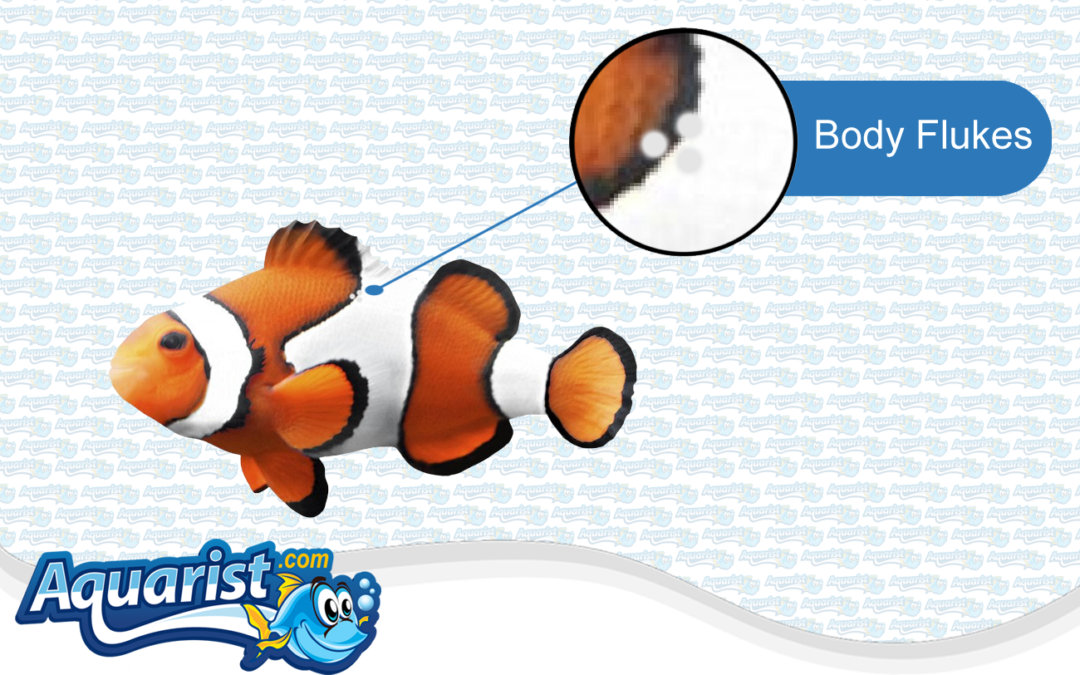Comprehensive Guide to Saltwater Fish Diseases: Body Flukes
Body flukes are parasitic flatworms that infest the skin, fins, and gills of saltwater fish, causing significant irritation, tissue damage, and stress. These parasites, known as monogenean trematodes, can spread quickly in an aquarium, especially in crowded or poorly maintained tanks. If not treated promptly, body flukes can lead to severe health problems and secondary infections. This guide provides a detailed overview of body flukes in saltwater fish, covering their causes, symptoms, treatment options, and preventive measures to help you effectively manage this parasitic infection.
What are Body Flukes?
Body flukes are monogenean trematodes, a type of parasitic flatworm that attaches to the skin, fins, and gills of fish. These parasites feed on the mucus, skin, and blood of their hosts, causing irritation and damage. Body flukes are highly contagious and can spread rapidly through an aquarium, particularly if water quality is poor or the fish are stressed. Infected fish may experience symptoms such as excessive mucus production, skin lesions, and respiratory distress.
Causes of Body Flukes
Body flukes can be introduced to a saltwater aquarium through various pathways:
- Introduction of infected fish: Adding new fish to the aquarium without proper quarantine can introduce body flukes to healthy tank mates.
- Contaminated water or equipment: Using equipment that has been in contact with infected water or fish can spread body flukes.
- Overcrowding: High fish density increases stress and the likelihood of parasite transmission.
- Poor water quality: Stress from suboptimal water conditions can weaken the immune system of fish, making them more susceptible to parasitic infections.
Symptoms of Body Flukes
Recognizing the symptoms of body flukes early is crucial for effective treatment. Common signs of an infestation include:
- Excessive mucus production: Infected fish may produce more mucus than usual, which can appear as a slimy coating on the skin.
- Scratching or flashing: Fish may rub their bodies against rocks, sand, or decorations in an attempt to relieve irritation.
- Red or inflamed skin: The skin may appear red, irritated, or exhibit visible lesions or sores due to tissue damage.
- Clamped fins: Fish may keep their fins close to their bodies as a sign of discomfort.
- Respiratory distress: In severe infestations, flukes can also affect the gills, leading to labored breathing or rapid gill movement.
- Lethargy: Affected fish may become less active, swim sluggishly, or remain at the bottom of the tank.
Treatment Options for Body Flukes
Treating body flukes effectively requires addressing the parasitic infection and improving the fish's environment. The following steps can help manage and treat body flukes:
- Use antiparasitic medications: Medications containing praziquantel or formalin are effective against body flukes. Follow the product instructions carefully, and treat all fish in the aquarium to prevent reinfection.
- Improve water quality: Regularly perform water changes and maintain optimal water parameters to reduce stress and support the fish's immune system. Test for ammonia, nitrite, nitrate, and pH regularly.
- Increase aeration: Ensure proper oxygenation of the tank, as fish with body flukes may experience additional stress. Adding an air stone or increasing water flow can help improve aeration.
- Quarantine infected fish: If possible, move affected fish to a quarantine tank for treatment to prevent the spread of the parasite in the main tank.
- Salt baths (optional): For temporary relief, a salt bath can help kill the parasites and reduce irritation. Use a separate container with a salt concentration of 1.5-2% for 5-10 minutes, then return the fish to the main tank.
Preventing Body Flukes
Prevention is the best approach to managing body flukes in a saltwater aquarium. The following steps can help reduce the risk of an outbreak:
- Quarantine new fish: Quarantine new arrivals for at least 2-4 weeks before introducing them to the main tank. This helps prevent the introduction of parasites and other diseases.
- Maintain optimal water quality: Regularly test water parameters and perform routine water changes to keep the tank clean and stable. Good water quality supports fish health and reduces the risk of infections.
- Avoid overcrowding: Keep fish stocking levels appropriate for the size of the aquarium to reduce stress and the likelihood of parasite transmission.
- Disinfect equipment: Clean and disinfect any equipment used in the aquarium, such as nets, buckets, and siphons, to prevent the spread of parasites.
- Provide a balanced diet: Feeding your fish a varied diet with high-quality foods and vitamin supplements can boost their immune system and increase resistance to infections.
Pro Tips for Treating and Preventing Body Flukes
- Act quickly: Early intervention is crucial for treating body flukes. Prompt treatment helps reduce the severity of the infestation and prevents further health complications.
- Monitor water quality closely: Poor water conditions can exacerbate the symptoms of body flukes. Regularly check water parameters to ensure optimal conditions for recovery.
- Treat the whole tank: Body flukes can spread quickly, so it's essential to treat all fish in the tank, even if only one fish shows symptoms.
- Re-treat if necessary: Some antiparasitic medications may require multiple treatments to fully eradicate the flukes. Follow the medication's instructions carefully.
Common Mistakes to Avoid When Treating Body Flukes
To increase the effectiveness of treatment and avoid further complications, be mindful of these common mistakes:
- Using improper dosages: Overdosing or underdosing antiparasitic medications can harm the fish or make the treatment ineffective. Always follow the product's instructions.
- Not treating the entire tank: Failing to treat all fish in the tank can lead to reinfection. Ensure that the treatment covers the entire aquarium.
- Neglecting water quality: Poor water conditions can worsen the symptoms of body flukes and delay recovery. Maintain optimal water quality throughout the treatment process.
- Skipping quarantine for new fish: Introducing new fish without quarantine can bring parasites into the main tank, leading to outbreaks.
Understanding the Impact of Body Flukes on Fish Health
Body flukes can significantly affect the health and well-being of saltwater fish. The parasites cause irritation and damage to the skin, fins, and gills, leading to stress, secondary infections, and breathing difficulties. If not treated promptly, body flukes can result in severe health problems and even death. Proper diagnosis, timely treatment, and preventive measures are essential for maintaining a healthy aquarium and ensuring the long-term health of your fish.
Conclusion
Body flukes are a serious parasitic infection that can cause significant harm to saltwater fish if not addressed promptly. By recognizing the symptoms, understanding the causes, and using effective treatment methods, you can help protect your fish from this condition. Always maintain optimal water quality, provide a safe tank environment, and quarantine new fish to reduce the risk of infestations. With proper care and timely intervention, you can ensure the health and well-being of your saltwater fish.

